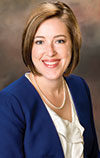Growing up, I remember my dad burning off our Russell bermudagrass hayfields in the late winter. Although we don’t discuss burning warm-season perennial pastures and hayfields as much anymore as a management tool, fire is one of nature’s ways of preparing for renewal. The use of fire can remove extra thatch, help break pest cycles and reduce initial weed competition in warm-season grass stands at spring emergence from dormancy. Conducting a prescribed or “controlled” burn requires planning. Prescribed burning means that we have a well-defined plan to create the appropriate burn environment effectively and safely.
First, selecting the appropriate time of year for burning warm-season perennials is important. Usually, late January through early March in the southeast U.S. is a good time to consider burning because warm-season forages are still in true dormancy. Land preparation to create burn lines around the field is important to keep fire contained to the appropriate fields and ensure safety of the burn.
Obtain a burn permit prior to the burn, and follow weather conditions to select a time window for burning fields. A controlled burn does not have to be conducted every year. A burning frequency of every two to four years is feasible for many operations and helps maintain stand health.
Bahiagrass, native warm-season grasses and bermudagrass fields are all species which can undergo periodic burning. Note that some stoloniferous varieties of bermudagrass such as Tifton 85, or those pronounced aboveground runners, are more sensitive to fire. There are several extension resources available online from land-grant universities in the Southeast on this topic, which are tailored to various forage production systems. Take the time to read through these resources and determine if fire may be an additional management tool for your forage toolbox.







